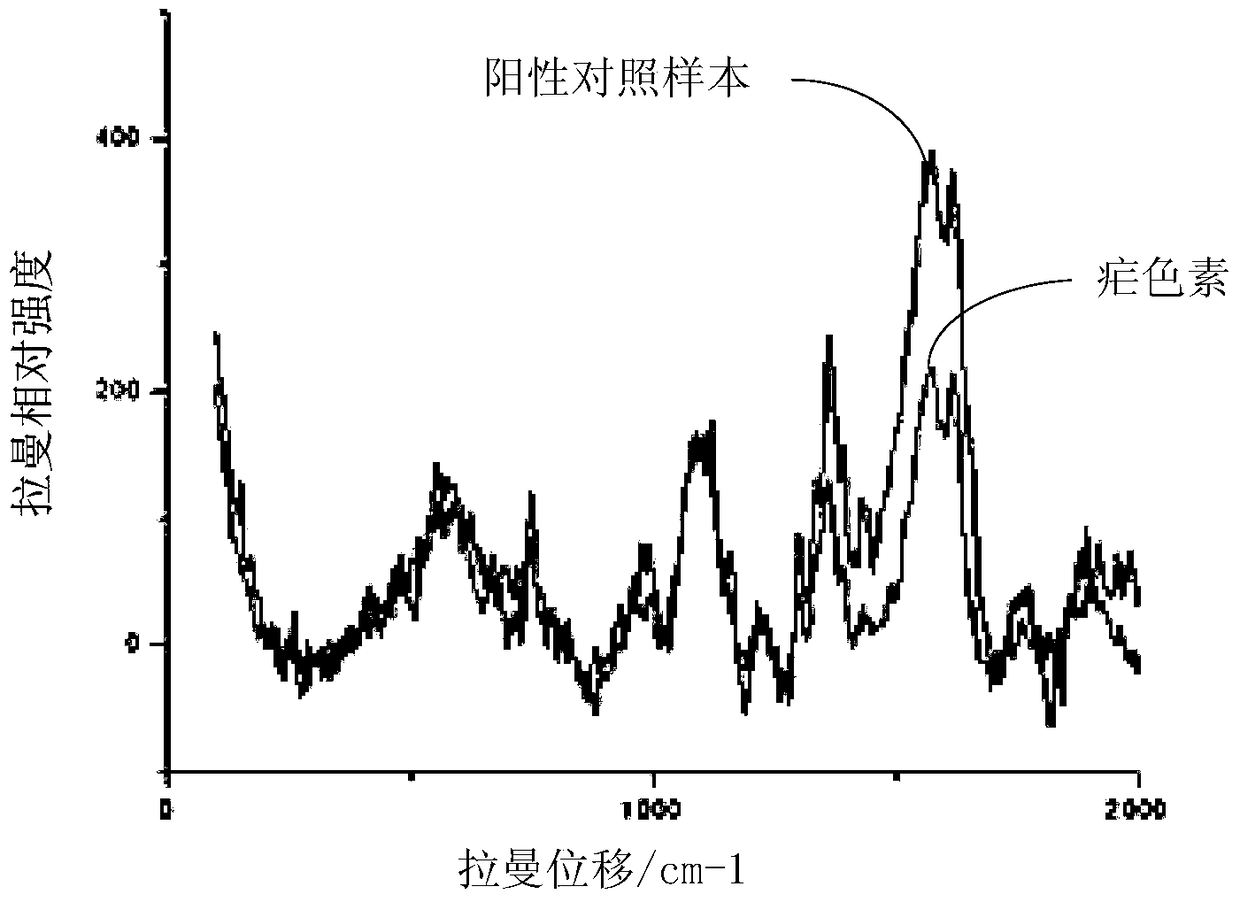Plasmodium detection method and detection system
A detection system and detection method technology, applied in the fields of biotechnology and medicine, can solve the problems of weak Raman signal and low detection sensitivity, etc.
- Summary
- Abstract
- Description
- Claims
- Application Information
AI Technical Summary
Problems solved by technology
Method used
Image
Examples
Embodiment 1
[0086] With 10.4g / LRPMI 1640, 5.98g / LHEPES, 2g / L glucose, 0.025g / L hypoxanthine, 4.2g / LAlbumax II, 2.56g / L NaHCO 3 and 0.12g / L gentamicin-based complete medium, together with normal human fresh red blood cell suspension to cultivate Plasmodium, the Plasmodium strain comes from red blood cells infected with Plasmodium falciparum 3D7. After 3 days of culture, the culture medium was collected as a positive control sample.
[0087] 0.10g of saponin, 4g of NaCl, 0.1g of KCl, 1.8g of Na 2 HPO 4 ·12H 2 O, 0.12g of K 2 HPO 4 Dissolved in deionized water, made into a 500mL solution, stirred and mixed with a magnetic stirrer to obtain a lysis solution.
[0088] The positive control sample and the lysate were mixed at a volume ratio of 1:10 respectively. After fully lysed, centrifuged at 3000 rpm for 15 min to retain the first precipitate, and then repeated the operation of fully lysed, and centrifuged at 3000 rpm for 15 min to retain the second precipitate. The second pellet was w...
Embodiment 2
[0093] Normal human blood samples were used as negative control samples.
[0094] 0.10g of saponin, 4g of NaCl, 0.1g of KCl, 1.8g of Na 2 HPO 4 ·12H 2 O, 0.12g of K 2 HPO 4 Dissolved in deionized water, made into a 500mL solution, stirred and mixed with a magnetic stirrer to obtain a lysis solution.
[0095]Mix the negative control sample and the lysate at a volume ratio of 1:10, and centrifuge at 3000 rpm for 15 min after fully lysing to retain the first precipitate. Then repeat the operation of fully lysing and centrifuge at 3000 rpm for 15 min to retain the second precipitate. The second pellet was washed three times with saline and centrifuged at 3000 rpm for 15 min to retain the third pellet.
[0096] The third precipitate was placed in a detection dish, and the Raman signal was collected under the laser irradiation of a Raman spectrometer (LabRAM HR 800, HORIBA JobinYvon, France). Relevant experimental parameters of Raman spectrometer: 532nm wavelength laser genera...
Embodiment 3
[0101] 0.10g of saponin, 4g of NaCl, 0.1g of KCl, 1.8g of Na 2 HPO 4 ·12H 2 O, 0.12g of K 2 HPO 4 Dissolved in deionized water, made into a 500mL solution, stirred and mixed with a magnetic stirrer to obtain a lysis solution.
[0102] Dissolve 1.0 mL of frozen blood samples from patients with previous malaria infection detected by the medical laboratory of Shenzhen International Travel Health Care Center (confirmed as malaria infection by blood smear staining microscopy and PCR detection) and dissolve them in a volume ratio of 1:10. After fully lysing, centrifuge at 3000rpm for 15min to retain the first precipitate, then repeat the operation of fully lysing once, and centrifuge at 3000rpm for 15min to retain the second precipitate, then wash the second precipitate with physiological saline three times, and centrifuge at 3000rpm for 15min, retain the second precipitate. Three precipitation.
[0103] The third precipitate was placed in a detection dish, and the Raman signal...
PUM
 Login to View More
Login to View More Abstract
Description
Claims
Application Information
 Login to View More
Login to View More - R&D
- Intellectual Property
- Life Sciences
- Materials
- Tech Scout
- Unparalleled Data Quality
- Higher Quality Content
- 60% Fewer Hallucinations
Browse by: Latest US Patents, China's latest patents, Technical Efficacy Thesaurus, Application Domain, Technology Topic, Popular Technical Reports.
© 2025 PatSnap. All rights reserved.Legal|Privacy policy|Modern Slavery Act Transparency Statement|Sitemap|About US| Contact US: help@patsnap.com



